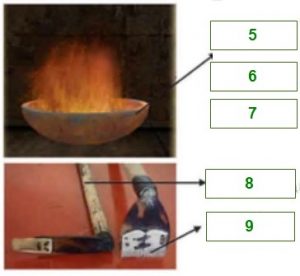Tattoo On Tikopia Reading Answer
IELTS Academic Reading Passage
A. There are still debates about the origins of Polynesian culture, but one thing we can ensure is that Polynesia is not a single tribe but a complex one. Polynesians which include Marquesans, Samoans, Niueans, Tongans, Cook Islanders, Hawaiians, Tahitians, and Maori, are genetically linked to indigenous peoples of parts of Southeast Asia. It’s a sub-region of Oceania, comprising of a large grouping of over 1,000 islands scattered over the central and southern Pacific Ocean, within a triangle that has New Zealand, Hawaii and Easter Island as its corners.
B. Polynesian history has fascinated the western world since Pacific cultures were first contacted by European explorers in the late 18th century. The small island of Tikopia, for many people – even for many Solomon Islanders – is so far away that it seems like a mythical land; a place like Narnia, that magical land in C. S. Lewis’s classic, ‘The Chronicles of Narnia.’ Maybe because of it – Tikopia, its people, and their cultures have long fascinated scholars, travelers, and casual observers. Like the pioneers’ Peter Dillion, Dumont D’Urville and John Coleridge Patterson who visit and write about the island in the 1800s, Raymond Firth is one of those people captured by the alluring attraction of Tikopia. As a result, he had made a number of trips to the island since the 1920s and recorded his experiences, observations, and reflections on Tikopia, its people, cultures and the changes that have occurred.
C. While engaged in the study of the kinship and religious life of the people of Tikopia, Firth made a few observations on their tattooing. Brief though these notes are they may be worth putting on record as an indication of the sociological setting of the practice in this primitive Polynesian community. The origin of the English word tattoo’ actually comes from the Tikopia word ‘tatau’. The word for tattoo marks, in general, is tau, and the operation of tattooing is known as ta tau, ta being the generic term for the act of striking.
D.The technique of tattooing was similar through Polynesia. Traditional tattoo artists create their indelible tattoos using pigment made from the candlenut or kukui nut. First, they burn the nut inside a bowl made of half a coconut shell. They then scrape out the soot and use a pestle to mix it with liquid. Bluing is sometimes added to counteract the reddish hue of the carbon-based pigment. It also makes the outline of the inscribed designs bolder on the dark skin of tattooing subjects.
E. For the instruments used when tattooing, specialists used a range of chisels made from albatross wing bone which were hafted onto a handle which was made from the heart wood of the bush and struck with a mallet. The tattooer began by sketching with charcoal a design on the supine subject, whose skin at that location was stretched taut by one or more apprentices. The tattooer then dipped the appropriate points – eighter a single one or a whole comb – into the ink (usually contained in a coconut-shell cup) and tapped it into the subject’s skin, holding the blade handle in one hand and tapping it with the other. The blood that usually trickled from the punctures was wiped away either by the tattooer or his apprentice, the latter having also inevitably painful – a test of fortitude that tattooers sought to shorten by working as fas as possible. In fact, tattoos nearly always festered and often led to sickness – and in some cases death.
F. In ancient Polynesian society, nearly everyone was tattooed. It was an integral part of ancient culture and was much more than a body ornament. Tattooing indicated ones’ genealogy and/or rank in society. It was a sign of wealth, of strength and of the ability to endure pain. Those who went without them were seen as persons of lower social status. As such, chiefs and warriors generally had the most elaborate tattoos. Tattooing was generally begun at adolescence, and would often not be completed for a number of years. Receiving tattoos constituted an important milestone between childhood and adulthood, and was accompanied by many rites and rituals. Apart from signaling status and rank, another reason for the practice in traditional times was to make a person more attractive to the opposite sex.
G. The male facial tattoo is generally divided into eight sections of the face. The center of the forehead designated a person’s general rank. The area around the brows designated his position. The area around the eyes and the nose designated his hapu, or sub-tribe rank. The area around the temples served to details his signature. This signature was once memorized by tribal chief’s who used it when buying property, signing deeds, and officiating orders. The cheek area designated the nature of the person’s work. The chin area showed the person’s mana. Lastly, the jaw area designated a person’s birth status.
H. A person’s ancestry is indicated on each side of the face. The left side is generally the father’s side, and the right side was the mother’s. the manutahi design is worked on the men’s back. It consists of two vertical lines drawn down the spine, with short vertical lines between them. When a man had the manutahi on this back, he took pride in himself. At gatherings of the people he could stand forth in their midst and display his tattoo designs with songs. And rows of triangles design on the men’s chest indicate his bravery.
I. Tattoo was a way of delivering information about its owner. It’s also a traditional method to fetch spiritual power, protection and strength. The Polynesians use this as a sign of character, position and levels in a hierarchy. Polynesian people believe that a person’s mana, their spiritual power or life force, is displayed through their tattoo.
QUESTIONS 1 – 4
Do the following statements agree with the information given in Reading Passage 1?
In boxes 1-4 on your answer sheet, write
YES if the statement agrees with the view of the writer
NO if the statement contradicts the view of the writer
NOT GIVEN if it is impossible to say what the writer thinks about this
- Scientists like to do research in Tikopia because this tiny place is of great remoteness.
- Firth was the first scholar to study on Tikopia.
- Firth studied the culture differences on Tikopia as well as on some other islands of Pacific.
- The English word ‘tattoo’ is evolved from the local language of the island.
QUESTIONS 5 – 9
Label the diagram below.
Choose NO MORE THAN TWO WORDS from Reading Passage 1 for each answer. Write your answers on boxes 5-9 in your answer sheet.

5. ………………..
6. ………………..
7. ………………..
9. ………………..
QUESTIONS 10 – 14
Complete the notes below.
Choose NO MORE THAN TWO WORDS from the passage for each answer. Write your answers on boxes 10-14 in your answer sheet.
Location on the body: Significance. 10 ____________of male face: general rank 11_____________of male face: prestige – Female’s right side of the face: 12 __________ Location on the body: Geometric patterns – Male back: 13__________ – Male chest: 14_____________

Solution For: Tattoo On Tikopia Reading Answer
| 1. YES | 8. HEAR WOOD |
| 2. NO | 9. WING BONE |
| 3. NOT GIVEN | 10. THE FOREHEAD |
| 4. YES | 11. CHIN AREA |
| 5. COCONUT SHELL | 12. MOTHER’S ANCESTRY |
| 6. SOOT | 13. VERTICAL LINES |
| 7. LIQUID | 14. TRIANGLES |
Review and Practice
- Regularly practice with IELTS reading samples and time yourself to get used to the pressure of the exam.
- Review your mistakes to understand where you went wrong and how to avoid similar errors in the future.
Our Books
Master IELTS Speaking Part 1
IELTS Writing Task 1 Book
IELTS Writing Task 2 Book
Tattoo On Tikopia Reading Answer Explanation
Comin Soon
Practice IELTS Other Modules
IELTS Listening
The IELTS Listening test assesses how well you can understand spoken English in various contexts. It lasts about 30 minutes and is divided into four sections with a total of 40 questions. The listening tasks become increasingly difficult as the test progresses.
IELTS Academic Reading
The IELTS Academic Reading section assesses your ability to understand and interpret a variety of texts in academic settings. It is designed to evaluate a range of reading skills, including skimming for gist, reading for main ideas, reading for detail, understanding inferences, and recognizing a writer's opinions and arguments.
IELTS Speaking
The IELTS Speaking test assesses your ability to communicate in English on everyday topics. It lasts 11-14 minutes and consists of three parts: introduction, cue card, and a discussion based on the cue card topic.
IELTS General Reading
IELTS General Reading tests your ability to understand and interpret various types of texts. Here are some key areas and types of content you can expect to encounter in the reading section, along with tips for effective preparation.
IELTS Academic Writing Task 1
In IELTS Academic Writing Task 1, you are presented with a visual representation of information, such as graphs, charts, tables, or diagrams, and you are required to summarize, compare, or explain the data in your own words.
IELTS General Writing Task 1
In IELTS General Writing Task 1, you are required to write a letter based on a given situation. The letter can be formal, semi-formal, or informal, depending on the prompt. Here’s a breakdown of the key components to include in your letter
IELTS Academic Writing Task 2
In IELTS Academic Writing Task 2, you are required to write an essay in response to a question or topic. Here’s a guide to help you understand the essential elements of this task
IELTS Exam Tips
To succeed in the IELTS exam, practice regularly, familiarize yourself with the test format, improve your vocabulary, develop time management skills, and take mock tests to build confidence.
Grammer for IELTS
Grammar is the foundation of effective communication in English. Understanding tense usage, subject-verb agreement, and sentence structure enhances clarity and coherence in writing and speaking.
Vocabulary for IELTS
Vocabulary plays a crucial role in the IELTS (International English Language Testing System) exam, especially in the Speaking and Writing sections. Here’s an overview of why vocabulary is important and how it impacts your performance
RECENT IELTS SAMPLES QUESTIONS AND ANSWERS
Becoming An Expert Reading Answer
A Expertise is commitment coupled with creativity. Specifically, it is the commitment of...
STUDY CENTRE COURSES Reading Answer
SELF-STUDY TIPS AHowever difficult you find it to arrange your time, it will pay off in the...
The Extrinct Grass In Britain Reading Answer
A The British grass interrupted brome was said to be extinct, just like the Dodo. Called...
Morse Code Reading Answer
A. A new satellite-based system is being implemented to replace Morse code for sending...
Magnetic Therapy Reading Answer
AMagnetic therapy, which is a $5-billion market worldwide, is a form of alternative medicine...
Lack Of Sleep Reading Answer
Section A It is estimated that the average man or woman needs between seven-and-a-half and...













